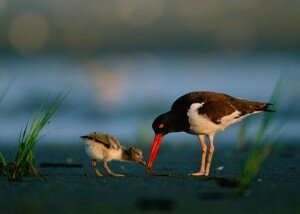February 24 is a milestone for the Refuge System. Today is the day when the single, cohesive Conserving the Future draft vision is available on this website for everyone – Refuge Friends, partners, employees and the general public – to tell us what you think.
The draft is the culmination of the work and ideas of more than 70 members of five Core Teams, who wrote the individual documents that fed into this one piece. We are taking comments until Earth Day, April 22 – lots of time for everyone who cares about the Refuge System to help set the direction for the next decade or so.
With almost 100 draft recommendations to guide the growth and management of the National Wildlife Refuge System for the next decade or so, the draft vision covers the gamut of wildlife conservation issues. Among its recommendations are:
- To work broadly across landscapes and with private landowners to increase the representation, size and connectivity of protected areas.
- To implement a plan to guide the Refuge System’s land conservation work and overhaul the Land Acquisition Prioritization System to help determine the importance of new and existing acquisition projects, including the establishment of national wildlife refuges near urban areas.
- To encourage a Friends group for every staffed refuge; there are now about 230 Friends groups.
- To review the Appropriate Use Policy, so a wider variety of nature-based experiences may be possible. The draft notes that jogging, picnicking, sunbathing, bicycling and dog-walking often are considered outside of the “wildlife-dependent recreation” definition that guides strict interpretation of appropriate use. “Refuge managers have become rightly cautious because they have seen what happens to wildlife resources when participation is too large and incompatible,” the draft says.
- To engage youth in an array of work and volunteer programs.
- Within the next 10 years, to increase the number of minorities and people with disabilities who work for the Refuge System, in part by reaching high school and college youth from diverse communities.
- To develop an environmental education strategy that not only inventories existing programs, but also identifies priorities for investment of staff and funds and outlines basic standards for national wildlife refuges.
- To develop standards for credibility, efficiency and consistent application of science in planning and management.
- Working with state fish and wildlife agencies, to prepare a strategy to double youth participation in hunting and fishing by 2020, paying special attention to individuals of all ages with disabilities.
The draft also makes recommendations regarding climate change, law enforcement, fire management, marine ecosystems, invasive species, wilderness stewardship, and conservation science and research.
So, if anyone is wondering about the best time to comment, the answer is easy: just as soon as you’ve had time to digest the draft vision and gather your thoughts. You might even want to comment more than once. You will certainly want to follow the online conversation.
I hope you will comment directly on the draft document. We have made the comment area easy to find, and you can always email your comments directly to . We have also added an exciting, new feature: the bold ideas section. Don’t hold back. Articulate new ways of conducting conservation business. Tell us if we are poised to meet the conservation demands of the 21st century. Here is a place where you can get a little wild; intellectually.
This website is probably the most unbridled communications avenue I have seen in my 25 years of working for the federal government. Take advantage of it. Use it to talk to your colleagues nationwide. Engage other Refuge Friends. Invite your partners. We want to hear everyone’s most insightful opinions. The time is now.




2 Comments in this post »
RSS feed for comments on this post.
HI
Ive been painting birds (oil on canvas) and came across this photo. May I use it for a painting?
Thx
Laura
I don’t see why not! Just be sure to credit the original to the photo credit provided – thanks Laura!